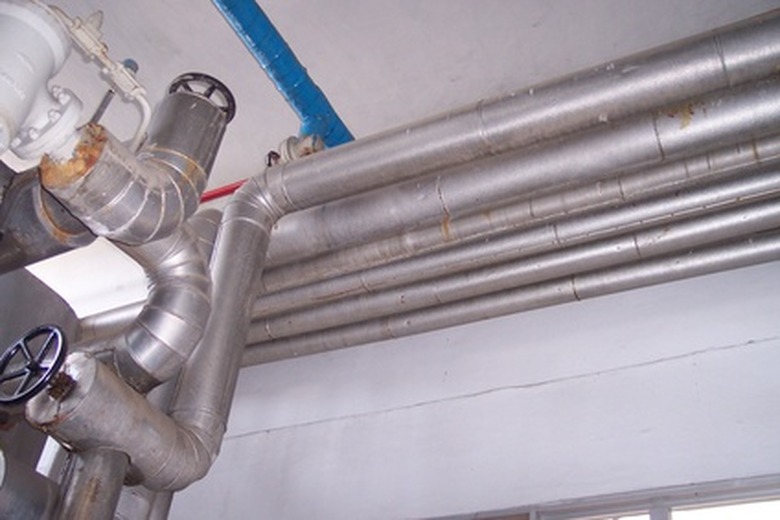How To Encapsulate Asbestos Pipes
Things Needed
-
Encapsulation material of choice: paint, commercial penetrating encapsulant or encapsulating wrap
-
Safety gear, including gloves and mask
Although asbestos is now banned in construction, you may find pipes with asbestos-containing insulation in your older home. When the fibers of that insulation slough away, they can become lodged embedded in lung tissues, causing a number of respiratory diseases. If you discover that pipes in your home contain asbestos, you can encapsulate those fibers and prolong the life of the fixture. However, you should have an asbestos abatement professional inspect your home before taking action.
Step 1
Examine the pipe. If the surface of the pipe or the pipe wrap is damaged or will need repairs in the near future, you may wish to have a professional remove and replace the pipe. Many states will require you to remove the pipe if the surface is damaged because encapsulation will not stop the fibers from escaping. If the pipe is damaged, minimize access to the area and call an asbestos abatement professional.
Step 2
Choose your encapsulation material. You can encapsulate pipes with paint (called a bridging encapsulant) or a specially designed penetrating encapsulant, which will sink into the pipe and bond with the asbestos fibers, preventing them from flaking. Alternatively, you can choose to wrap the pipe with an encapsulating tape or material, available at hardware or safety equipment stores. Chemical encapsulants like paint or a penetrating encapsulant will work best on undamaged material, while tape or material will work as a temporary solution on damaged material.
Step 3
Apply your encapsulation material to the pipe. Wear a face mask and gloves when spraying the encapsulation chemical or applying the tape or material to the pipe. If spraying a chemical, ensure that the area is well-ventilated and the floor beneath the pipe is covered. Cover the entire area of exposed asbestos-containing material. Allow to dry and check for any gaps in encapsulation. Reapply if necessary. If using encapsulating wrap or tape, ensure that all gaps or holes in the original pipe wrap are covered.
Step 4
Have a professional inspect the asbestos-containing pipe regularly. A professional will recognize any potential problems or damage to the encapsulation.
Tip
Replacing the pipe, though more expensive, is a more effective solution for containing asbestos. Encapsulation can make later removal of a pipe more expensive, so consider the cost of replacement versus long-term encapsulation before making a decision.
Warning
Most states have regulations regarding the containment and disposal of asbestos. Check your state's regulations before deciding on a course of action.
Never attempt to remove asbestos-containing material yourself. Because of the disposal regulations, you should always hire a licensed professional.
Wear safety gear when handling or inspecting asbestos-containing material.
